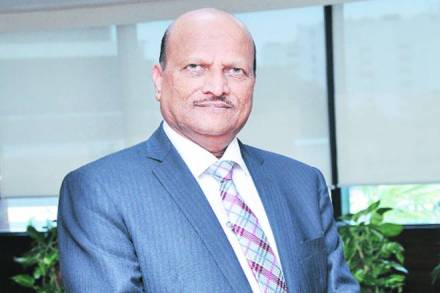With strategic long-term plans in place, the Indian Bank is aiming to join the league of the top performers even as it pushes for the recovery of stressed assets, says Kishor Kharat, MD & CEO, in an interview to Sajan C Kumar. Excerpts:
What are the bank’s expectations for FY19?
Considering the internal strengths of the bank and the positive business enablers, we have undertaken a growth path. The bank has been growing steadily in the last three quarters and expects to end the current fiscal with total y-o-y growth of more than 16%. In the next fiscal, we want to grow on the back of a strong capital base, achieving a business level of above `4.25 lakh crore by March, 2019.
Your views on loan growth in the current environment.
The stabilisation of the GST regime augurs well for the industry, as does the forecast of a normal monsoon for the next year. The advances growth of the bank will be primarily driven by the RAM sector– retail, agriculture and MSMEs. For the nine-month period ending December, 2017, the retail segment grew 26.97%, agriculture 21.48%, and the MSME book increased by 38.35%. So the bank will continue its focus on RAM and resort to selective lending under the corporate segment. In agriculture, we are tying up with external agencies to help farmers procure fertilisers, seeds, etc online at cheaper rates. We would also be deploying more manpower resources like agricultural officers at our rural branches. For MSMEs, 73 specialised branches have been identified and centralised processing units would be set up to support them. We have also created activity-linked cluster schemes for MSMEs across the country.
How are you pushing alternate banking channels?
Indian Bank has been at the forefront when it comes to the launch of technology products. It has launched the IndPay Mobile Banking App to offer the full spectrum of banking services on smartphones. Internet banking facility too has been provided to customers. We recently modified the user interface for internet banking to offer a contemporary look with added features.
What would be your focus areas going forward?
Increasing the share of current deposits in CASA would be one of the focus areas in FY18-19. To accelerate recoveries and arrest fresh slippages, the bank would set up a stressed asset management (SAM) vertical at zones with a concentration of such assets.
Any capital raising plans?
As of December 31, 2017, the bank’s CET 1 and CRAR were 10.64% and 12.44% (13.10% with ploughback of profit), well above the minimum requirement of 6.75% and 10.25%, respectively. However, we would be raising capital to support future growth, maintain an adequate cushion over the RBI-prescribed minimum CRAR — which will go up by March 31, 2019 — and to meet the additional requirements under IndAS . The bank has approval from the board and shareholders to raise equity capital of up to `7,000 crore. It plans to raise equity capital in one or multiple tranches through any one or a combination of FPO/private placements/QIP/rights issue /preferential issue and institutional placement programme.
What is the status of your overseas branches? What plans do you have on this front?
We have three overseas branches — one in Singapore and two in Sri Lanka (Colombo & Jaffna). The overseas centres have been growing their business, making profit and have been adequately capitalised. The performance of our overseas branches stands out in peer-level comparison as well as on business parameters. The bank can accommodate any additional capital requirement arising out of the business expansion of these overseas branches.
What initiatives have you taken on the digitisation front?
For greater penetration of digital products in rural areas, we have been adopting villages and turning them into Digital villages. To this end, a Digital Village Adoption Fortnight was conducted from February 1, 2018 to February 15, 2018. As many as 205 villages were adopted across India, with customers being made aware of the ease of digital transactions. As a result of the initiatives taken, the bank was ranked second among public sector banks on the number of digital transactions carried out — next only to the State Bank of India.
We have a robust public grievance redressal system called SPGRS (Standardised Public Grievances Redressal System) through which customers can lodge complaints, which are attended to and redressed within 48 hours. The bank has also launched a separate complaint portal for digital transactions and has an automated escalation mechanism in place for complaints not being redressed within the specified timelines.
